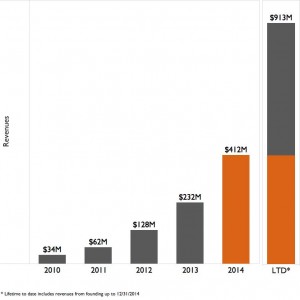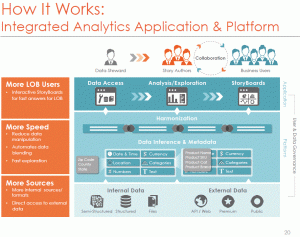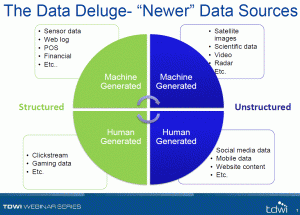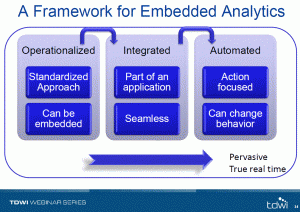Today the BBBT held a special session. While most presentations are by companies with full products, existing sales and who typically have been around for a few years, today we had the pleasure of listening to Sherry Brown, President of AptiMap. This is a pure startup company, still tiny. She was looking for our always vocal analyst community’s opinions on her initial aim and direction. Not to surprise anyone who knows the BBBT, we gave that at full bore.
Ms. Brown’s goal is to provide a far easier way of mapping fields between source and target datasets for creating data warehouses and other data stores. It’s a great start and she has some initial features that will help. I’ll be blunt: I’m intentionally not going to say a lot. As mentioned, they are a very early startup and the software isn’t full fledged. That means any mention of what they have and don’t have could be inaccurate by next week. That’s not a bad thing, it’s what happens at that phase.
I will mention that the product is cloud based from the start.
The important question about whether or not to contact AptiMap is what who you are and what you need. Most of the feedback to Sherry was about that. It was helping to focus the message. If I have correctly understood the consensus of the attendees, here are the critical things to focus upon while defining a market for the initial product:
- Aimed at IT and business analysts
- Folks currently using modeling tools or spreadsheets at a start
- Focus on standard, enterprise data sources, from spreadsheets to RDBMS’s, Hadoop can wait
- Mid-sized companies integrating their first sets of systems or trying to get a handle on their existing data
- Might especially be good in the hands of consultants going into those types of companies.
- Many of the potential users are tablet users, so focus on that aspect of mobile
One final key, one that needs to be a full paragraph rather than a bullet and one that many technical startups don’t get while building their products based on user needs, is that users aren’t the only decision makers in the product. As mentioned, this is a cloud product and AptiMap will be expecting recurring revenue from monthly or annual fees. The business analyst is often not the person who approves those types of costs. The firm also needs to focus messages on the buyers, whether IT, line or consulting management, to build messages that help them understand the business benefit of providing the tool to their people.
Understanding your market matters. It will help the firm not only focus product, but also narrow down the marketing message and image to aim at the correct audience.
Too often, founders get a great technical idea and focus on a couple of users to fill out product features and then try to find a market. BI is moving too fast for that, the vision needs to be much more clearly set out much earlier than was needed in software companies twenty years ago.
Finally, I mentioned the cloud model but should also mention AptiMap is offering a 30-day free trial.
Summary
AptiMap has an initial product that can help people more rapidly and accurately create mappings between data sources and targets. It’s cloud based for easy access. It is, however, very early in the product and company life cycle.
I would suggest it primarily to analysts in mid-sized organizations or consultants who work with SMBs and want some quick hit functionality add to map data sources for the creation of data warehouses, ODS’s and other relationally oriented data repositories.
If you want to experiment inexpensively with an early product that could help, contact them.



